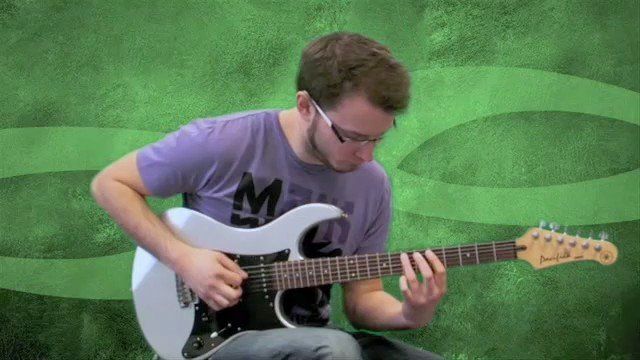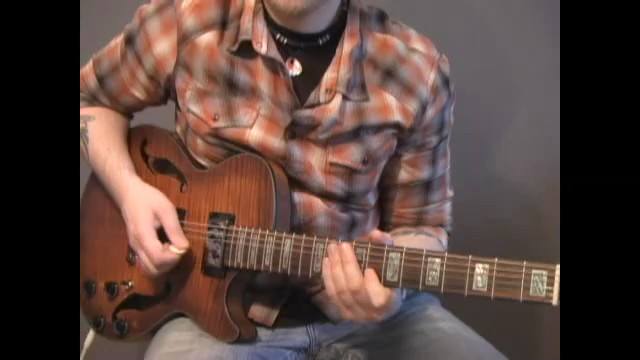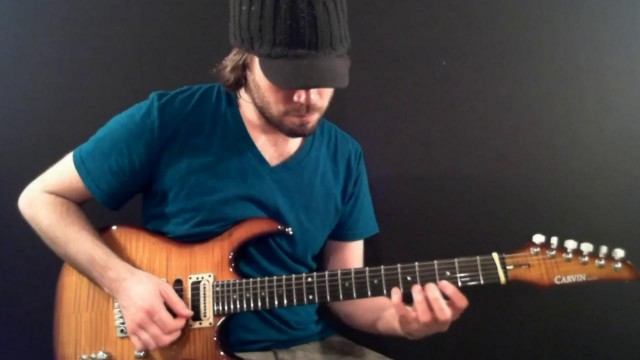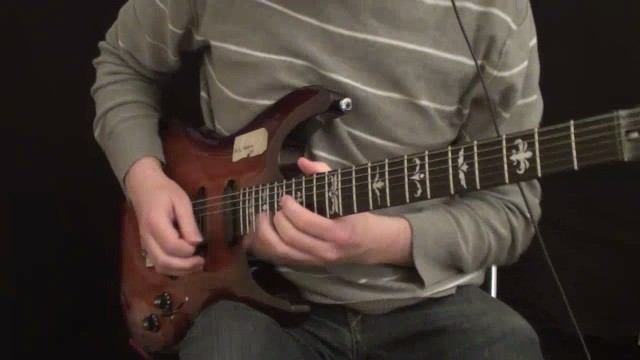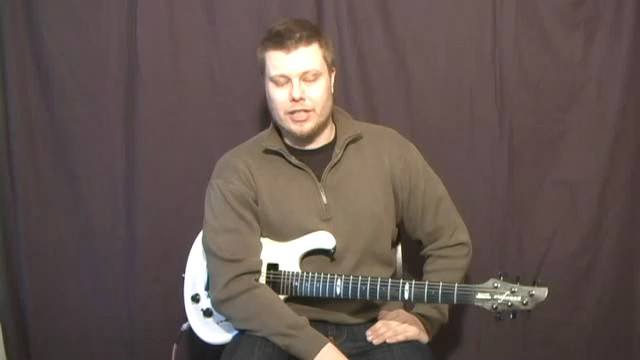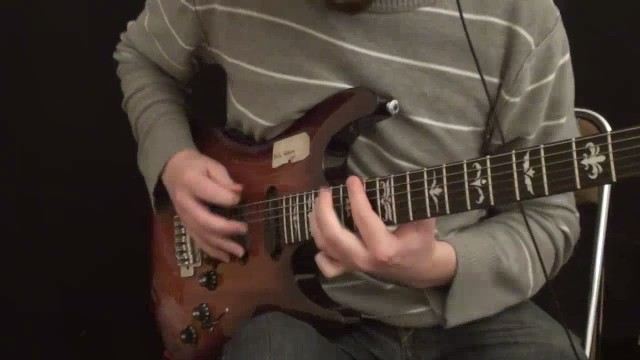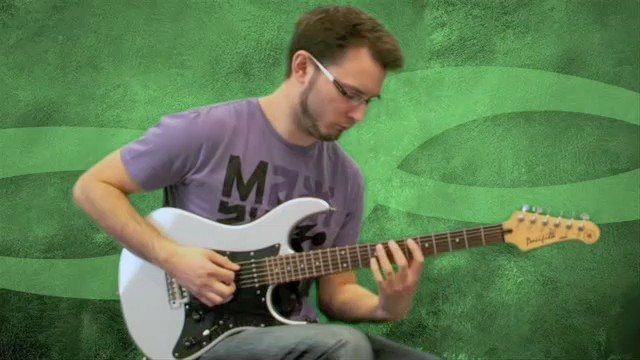In this final stop, I will attempt to tie it all together for you. I have improvised a solo over a funk/fusion backing in G min (with some heavy alteration going on harmonically).
Look through the video, and then start working on the transcription. Since it is an improvisation, you won’t be getting any slowed down version of this one, but I’m sure you’ll manage.
What is important here is to analyze my playing, and see how I have tied in the ideas we have gone through into actual improvisation. To help you on the way, I will go through the parts where I have included the general idea of the lines. Sometimes they’re pretty close to the original, sometimes it might be pretty far off.
The first example can be found in bar 5, where you can identify the first part of example #1. However, since the backing I made has a shuffle beat, I play this idea with shuffle 16th notes. You will see that I also sometimes play straight 16ths over the shuffle beat, which I do to create a rhythmic tension, and not only melodic.
The second example can be found in bar 8. As mentioned above, this time I play it in straight 16ths. If you recall, this is derived from example #3, which was played in 8-note triplets. This goes to show what I discussed earlier, that you always need to be able to alternate your choice of note-values to fit the particular song you’re playing over. 8-note triplets, just wouldn’t have grooved in this instance. It is also important to note that just as you will have a feel for what note sounds best over what chord, and you can recognize the sound of a scale or a chord, you need to be able to make all note values and variations a integral part of your rhythmic “ear”. In the end you should improvise as much with rhythm as you do with note choice. I must once again refer you to my Timing and Note Value Variation tutorial to really get that down.
The next part we shall look closer on is in bars 11-13. Here you will find a variation of example #4. You will see that concept of the line remains the same, but as I improvise I automatically alter it to fit the beat and groove of the backing. This is not a conscious process, but rather I choose what notes to play based on the harmonies I hear, and at the same time let my timing guide my choice of note value. Note choice and note value should be like 2 sides of the same coin. If you only have one or the other, you can still make do very well. However, when both sides are together in a complete package, the synergy between them is enormous; you improvise both harmonically, but also like a drummer would approach it at the same time. This will enable you to groove and improvise over any style, in any tempo, and never feel lost in any musical context. I cannot stress this enough, since it is something that is sadly lacking among today’s guitar players, and I do not want you guys to fall in to the same rut!
Next, we find a variation of example #2 in bars 16-17. In the first part, I expand the idea both rhythmically and harmonically to fit what I hear going on in the backing, but keep the note value a straight 16th. In bar 17 however, it felt natural to combine the fast flurry of the 16th note triplet arpeggios, with shuffle beat 16th notes. I end the line by accentuating the fill in the backing, playing the 8 note triplet in unison (although not the same notes, just rhythmically the same).
The use of example #5 is a bit harder to track. It’s not apparent in the sense that I play more or less the same as in the example. However, the concept of the idea is very much there in bars 22-23. The chromatic sixteen note ideas are all there, but interwoven into more complex lines.
I end the whole improvisation with a small homage the great Jimi in bar 25, and that is it!
Great work guys! You made it all the way through! What remains now is for you to practice all these things to a drum machine, your own “buildt-in” drum machine (always do that to strengthen your beat-awareness), and finally over the backing provided. Alas, this is only the first step on your journey! Next you should be able to play all of these ideas over ANY backing, in any key, tempo or style. Then record yourself improvising, and post it in the forum so we can all take part and rejoice in your progress!
Until the next tutorial, thanks for tuning in. And as always… Keep your groove on!!





















